Cleveland Range SGL-30-T1, SGL-40-T1 Operation Manual
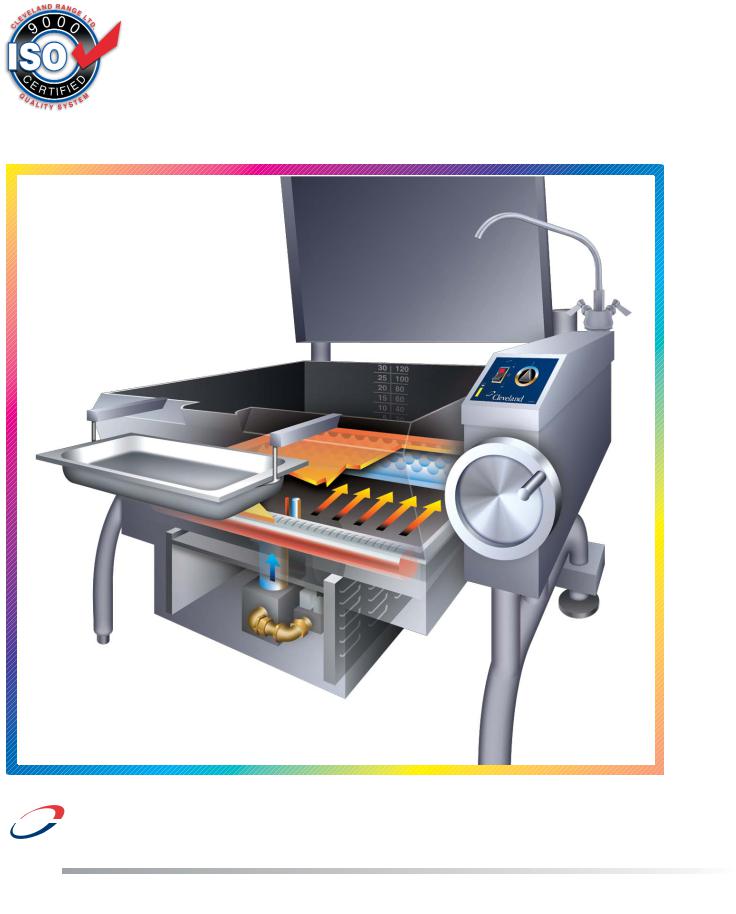
Operators Manual
Installation, Operation & Service
Gas T1 Skillets
FOR MODELS
BUILT AFTER
MAY 2006:
SGL-30-T1
SGL-40-T1
For a complete Service Manual refer to www.clevelandrange.com
|
|
™ |
|
|
Cleveland |
1333 East 179th St., Cleveland, Ohio, U.S.A. 44110 |
|||
|
|
|
|
|
|
|
|
Phone: (216) 481-4900 Fax: (216) 481-3782 |
|
|
|
Enodis |
|
|
|
|
|
|
Visit our web site at www.clevelandrange.com |
|
|
|
|
|
|
|
|
|
SE95050 Rev. 6 |
|
|
|
|
|

FOR THE USER
FOR YOUR SAFETY
DO NOT STORE OR USE GASOLINE OR ANY OTHER FLAMMABLE LIQUIDS AND VAPOURS IN THE VICINITY OF THIS OR ANY OTHER
APPLIANCE.
WARNING: Improper installation, adjustment, alteration, service or maintenance can cause property damage, injury or death. Read the Installation and Operating instructions thoroughly before installing or servicing this equipment.
IMPORTANT
Post in a prominent location, instructions to be followed in the event the user smells gas. This information shall be obtained by consulting your local gas supplier.
Keep appliance area free and clear from combustibles.
Do not obstruct the flow of combustion and ventilation air.
All service must be performed by a qualified cleveland range technician.
For unit equipped with casters, the installation shall be made with a connector that complies with the Standard for Connectors for Movable Gas Appliances, ANSI Z21.69 or Connectors for Moveable Gas Appliances, CAMCGA-6.16, and a quick-disconnect device that complies with the Standard for Quick Disconnect Devices for Use With Gas Fuel, ANSI Z21.41, or Quick Disconnect Devices for Use with Gas Fue4 CANT-6.9. Adequate means must be provided to limit the movement of the appliance without depending on the connector and the quick-disconnect device or its associated piping to limit the appliance movement. A restraint can be attached to the rear leg next to the gas connection.
RETAIN THIS MANUAL FOR YOUR REFERENCE.
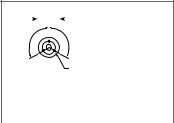
INSTALLATION
GENERAL
Installation of the unit must be accomplished by qualified installation personnel working to all applicable local and national codes. Improper installation of product could cause injury or damage.
This equipment is built to comply with applicable standards for manufacturers. Included among those approval agencies are: UL, A.G.A., NSF, ASME/N.Bd., CSA, CGA, ETL, and others. Many local codes exist, and it is the responsibility of the owner/installer to comply with these codes.
Observe all clearance requirements to provide proper make-up air flow. Do not obstruct the flow of combustion and ventilation air. Check rating plate to ensure that unit has been equipped to operate with the type of gas available at the installation.
Dimensions and clearance requirements are shown on the Specification Sheet.
INSPECTION / UNPACKING
1.Before unpacking visually inspect the unit for evidence of damage during shipping.
2.If damage is noticed, do not unpack the unit, follow "SHIPPING DAMAGE INSTRUCTIONS" shown below.
3.Carefully remove unit from shipping carton. Remove any packing material from unit. After carefully unpacking check for "concealed" damage. If damage is noticed, follow "SHIPPING DAMAGE INSTRUCTIONS" shown below.
4.A protective material has been applied to the stainless steel panels. This material must be removed immediately after installation, as heat will melt the material and make it more difficult to remove.
SHIPPING DAMAGE
INSTRUCTIONS
If shipping damage to the unit is discovered or suspected, observe the following guidelines in preparing a shipping damage claim.
1.Write down a description of the damage or the reason for suspecting damage as soon as it is discovered. This will help in filling out the claim forms later.
2.As soon as damage is discovered or suspected, notify the carrier that delivered the shipment.
3.Arrange for the carrier's representative to examine the damage.
4.Fill out all carrier claims forms and have the examining carrier sign and date each form.
CLEARANCE REQUIREMENTS
This unit must be installed in accordance with the clearances shown on the rating label which is adhered to the unit.
FOR YOUR SAFETY. Keep the appliance area free and clear of combustible materials.
INSTALLATION
1.Position the unit in it's permanent location, and level the unit by turning the adjustable feet.
2.Once positioned
and leveled, |
|
|
|
|
|
|
|
|
|
4 7/8" (124mm) |
|
|
|
|
|||||||||
permanently |
120 |
|
|
|
|
120 |
|||||
secure the unit's |
|
|
|
||||||||
|
|
|
|
|
|
|
|
|
|
||
|
|
|
|
|
|
|
|
|
|
||
rear flanged feet to |
|
|
|
|
|
|
|
|
7/16"Ø, 3 HOLES |
||
the floor using |
|
|
|
|
|
|
|
|
ON 3 1/8" (80mm) B.C.D. |
||
|
|
|
|
|
|
|
|
|
|
||
5/16" lag bolts and |
FLANGED FOOT DETAIL |
||||||||||
floor anchors |
|||||||||||
|
|
|
|
(REAR LEGS ONLY) |
|||||||
(supplied by the |
|
|
|
|
|
|
|
|
|
|
|
installer). Three |
|
|
|
|
|
|
|
|
|
|
|
bolts are required to secure each of the flanged feet.
3. Seal joints of flanged feet with a silicone sealant.
GAS
ENSURE THE GAS SUPPLY MATCHES THE UNIT'S REQUIREMENTS AS STATED ON THE RATING PLATE.
It is recommended that a sediment trap (drip leg) be installed in the gas supply line. If the gas pressure exceeds 14” water column, a pressure regulator must be installed, to provide a maximum of 14” water column gas pressure to the gas control valve.
Connect the gas line to the manual valve located at the rear of the control box.
Installation must be in accordance with local codes and/or the National Fuel Gas Code ANSI Z223.1 Latest Edition (USA) or the latest Installation Codes for Gas Burning Appliances and Equipment CAN/ CGA B149.1 (natural gas) and CAN/ CGA B149.2 (propane gas). Use a gas pipe joint compound which is resistant to L.P. gas. Test all pipe joints for leaks with soap and water solution. Ensure that the gas pressure regulator is set for the manifold pressure indicated on the gas rating plate.
The appliance and its individual shut-off valve must be disconnected from the gas supply piping system during any pressure testing of that system at test pressures in excess of 1/2 psi (3.45 kPa). The appliance must be isolated from the gas supply piping system by closing its individual manual shut-off valve during any pressure testing of the gas supply piping system at test pressures equal to or less than 1/2 psi (3.45 kPa).
ELECTRICAL
NOTE: Wiring diagram is located on the underside of the unit's control panel.
ENSURE THE ELECTRICAL SUPPLY MATCHES THE UNIT'S REQUIREMENTS AS STATED ON THE RATING LABEL.
A cord and plug are supplied with the 115 volt unit. Simply plug the unit into any grounded outlet rated for a minimum of 10 amps. The wiring diagram is located on the back of the console access panel.
When a unit is ordered and built for 208/240 volt, the supply line must be connected to the wiring terminations located inside the console. A wiring diagram is attached to the underside of the control panel.
WARNING: Electrical Grounding Instructions.
This unit is equipped with a three-prong (grounding) plug for your protection against shock hazard and should be plugged directly into a properly grounded three-prong receptacle. Do not cut or remove the grounding prong from this plug. Standard supply voltage is 115 volts A.C., however, optional A.C. voltages can be supplied on special order. A separate fused disconnect switch must be supplied and installed in the high voltage electrical supply line. The unit when installed, must be electrically installed and grounded in accordance with local codes, or in the absence of local codes, with National Electrical Code, ANSI/NFPA 70-1990 (USA) or the Canadian Electrical Code, CSA C22.2, Part 1 (Canada).
VENTILATION
Gas fired units are only to be installed under a ventilation hood in a room which has provisions for adequate make up air. Further information can be obtained by referring to the U.S.A. National Fire Protection Associations NFPA96 regulations. These standards have also been adopted by the National Building Code in Canada.
INSTALLATION CHECKS
Although the unit has been thoroughly tested before leaving the factory, the installer is responsible for ensuring the proper operation of unit once installed.
DO NOT ATTEMPT TO OPERATE THIS UNIT DURING A POWER FAILURE.
KEEP APPLIANCE AND AREA FREE AND CLEAR OF COMBUSTIBLES.
1.Supply power to the unit by placing the fused disconnect switch to the "ON" position.
2.Turn on main gas supply to unit. Open the skillet's shut-off valve (located at lower rear left).
3.Toggle HI / OFF / LO Switch to the "HI" or "LO" position.
4.For your safety the skillet is equipped with a power interrupter which automatically shuts off the gas supply to the burners whenever the skillet is raised more than 8°.
IMPORTANT: Before commencing to cook, ensure the skillet pan is in the lowered position. Also ensure the cover is raised.
5.Turn temperature control to maximum. Tilt skillet pan until heat indicator light turns off and heating system shuts down. The pan should be on a 5-10° angle.
6.Lower pan. Heat indicator light will re-light and heating system will re-energize.
7.Unit will continue to heat, heat indicator light will remain on until temperature is reached. Then the heat indicator light will cycle OFF indicating the heating system has shut off. The heat indicator light will continue to cycle ON and OFF as the heating system cycles ON and OFF maintaining the desired temperature.
3. Toggle HI / OFF / LO Switch to the "OFF" position.
WATER CONNECTION
(OPTIONAL)
A 1/2" NPT cold water line and/or a 1/2" NPT hot water line are required if unit is equipped with a single or double pantry faucet.
CLEANING
After installation the unit must be thoroughly cleaned and sanitized prior to cooking.
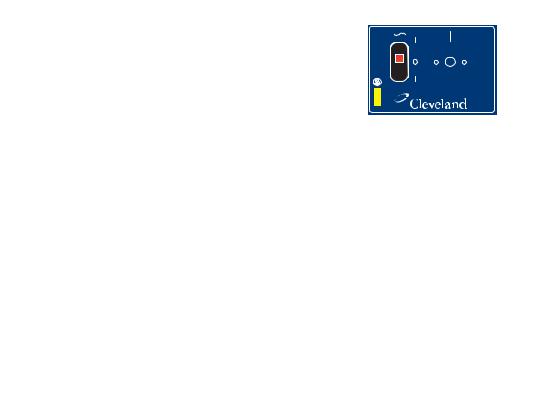
OPERATING INSTRUCTIONS
General Parts Drawing
ITEM # DESCRIPTION
1.HI / OFF / LO Switch
2.Power Indicator Light (red)
3.Temperature Dial
4.Heat Indicator Light (yellow)
5.Hand Tilt Wheel
6.Power Tilt Switch
7.Reset Button
8.Manual Tilt Override
9.Gas Shut Off Valve
10.Faucet
11.Tangent Draw-Off Valve (not shown)
9 |
|
|
7 |
|
HI |
|
|
10 |
LO |
|
6 |
|
|
|
|
4 |
1 |
2 |
3 |
CONTROL PANEL
5
8
FUNCTION
Center position - power to the unit is OFF.
HI position - unit is in high fire mode (unit heats faster). LO position - unit is in low fire mode (unit heats slower).
Indicates power is ON.
Regulates the surface temperature of the pan.
Turns ON when system is calling for heat and
OFF when system is satisfied.
Used for tilting the pan up or down.
Option - Used for tilting the pan up or down.
Fuse protection for optional power tilt.
Used on units with optional power tilt for tilting the pan up or down in case of power or mechanical failure.
Allows you to shut the gas off to the appliance if required.
Option - hot and/or cold faucet mounts to skillet for convenient filling of the pan.
Option - allows you to discharge product from the pan through the valve.
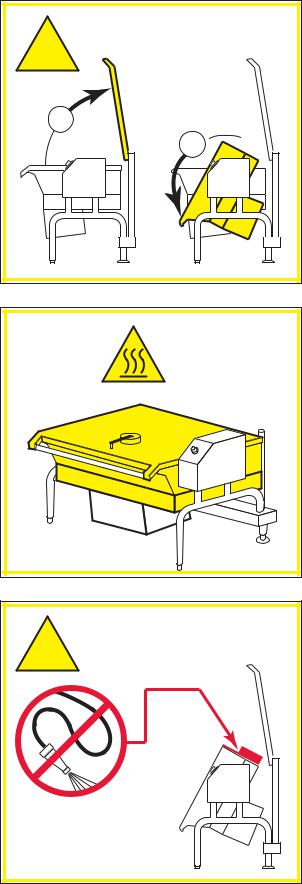
OPERATING THE UNIT
1.Ensure the gas and electrical supply to the unit are in the ON position.
FOR YOUR SAFETY:
This skillet will automatically shut off the gas supply when pan is raised more than 8°.
Before commencing to cook, ensure pan is in the lowered position.
2.MANUAL TILT: Cleveland skillets are equipped with a manual tilt mechanism for raising and lowering the pan. To raise pan, raise the cover and turn the crank clockwise. To lower pan, turn counterclockwise.
POWER TILT: Cleveland skillets can also be equipped with an optional electric power tilt mechanism for raising and lowering the pan. To raise pan, raise the cover and press up on the tilt switch. To lower pan, press down on the tilt switch.
3.Toggle HI / OFF / LO Switch to the "HI" or "LO" position. The red Power Indicator Light indicates power is on. The yellow Heat Indicator Light indicates burners are on.
4.To preheat, set Temperature Dial to desired cooking temperature. Unit is preheated when the yellow light goes out.
5.Insert product in pan.
6.If desired, once product has cooked, it can be held prior to serving at a lower temperature setting.
7.When cooking is completed, set Temperature Dial and HI / OFF / LO Switch to the OFF position.
8.The best time to clean the skillet is immediately after use, once skillet has cooled down. Refer to section titled "CLEANING INSTRUCTIONS" for details.
OPERATING SUGGESTIONS
1.Turn power switch to the "OFF" position when skillet is not in use.
2.Allow skillet to preheat before adding product.
3.Always lift the spring assist cover before activating the tilt mechanism.
4.During an electrical power interruption, turn Power Switch to the OFF position. This unit cannot be made to operate without electrical power.
! |
OPEN LID BEFORE |
TILTING PAN |
|
|
1 |
|
2 |
HOT |
! |
DO NOT |
HOSE DOWN |
|
THIS AREA |
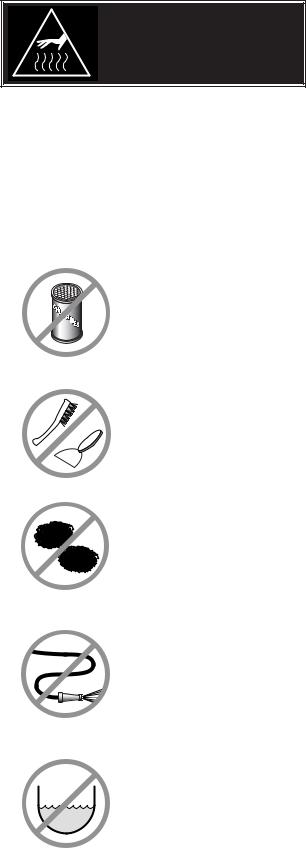
CLEANING INSTRUCTIONS
CAUTION
SURFACES MAY
BE EXTREMELY HOT!
CARE AND CLEANING
Cooking equipment must be cleaned regularly to maintain its fast, efficient cooking performance and to ensure its continued safe, reliable operation. The best time to clean is shortly after each use (allow unit to cool to a safe temperature).
WARNINGS
|
Do not use detergents or |
|
cleansers that are chloride |
|
based or contain quaternary |
|
salt. |
|
Chloride Cleaners |
|
Do not use a metal bristle |
|
brush or scraper. |
|
Wire Brush & |
|
Steel wool should never be |
|
used for cleaning the stainless |
|
steel. |
|
Steel Pads |
|
Unit should never be cleaned |
|
with a high pressure spray |
|
hose. |
|
High Pressure |
|
Spray Hose |
|
Do not leave water sitting in unit |
|
when not in use. |
Stagnant
Water
CLEANING INSTRUCTIONS
1.Turn unit off.
2.Remove drain screen (if applicable). Thoroughly wash and rinse the screen either in a sink or a dishwasher.
3.Prepare a warm water and mild detergent solution in the unit.
4.Remove food soil using a nylon brush.
5.Loosen food which is stuck by allowing it to soak at a low temperature setting.
6.Drain unit.
7.Rinse interior thoroughly.
8.If the unit is equipped with a Tangent Draw-Off Valve, clean as follows:
a)Disassemble the draw-off valve first by turning the valve knob counter-clockwise, then turning the large hex nut counter-clockwise until the valve stem is free of the valve body.
b)In a sink, wash and rinse the inside of the valve body using a nylon brush.
c)Use a nylon brush to clean tangent draw-off tube.
d)Rinse with fresh water.
e)Reassemble the draw-off valve by reversing the procedure for disassembly. The valve's hex nut should be hand tight only.
9.If the unit is equipped with a Butterfly Valve, clean as follows:
a)Place valve in open position.
b)Wash using a warm water and mild detergent solution.
c)Remove food deposits using a nylon brush.
d)Rinse with fresh water.
e)Leave valve open when unit is not in use.
10.Using mild soapy water and a damp sponge, wash the exterior, rinse, and dry.
NOTES
For more difficult cleaning applications one of the following can be used: alcohol, baking soda, vinegar, or a solution of ammonia in water.
Leave the cover off when the kettle is not in use.
For more detailed instructions refer to the Nafem Stainless Steel Equipment Care and Cleaning manual (supplied with unit).
STAINLESS STEEL EQUIPMENT CARE AND CLEANING
(Suppied courtesy of Nafem. For more information visit their web site at www.nafem.org)
Contrary to popular belief, stainless steels ARE susceptible to rusting. |
4. |
Treat your water. |
|
|
||
Corrosion on metals is everywhere. It is recognized quickly on iron and |
|
Though this is not always practical, softening hard water can do much |
||||
steel as unsightly yellow/orange rust. Such metals are called “active” |
|
to reduce deposits. There are certain filters that can be installed to |
||||
because they actively corrode in a natural environment when their atoms |
|
remove distasteful and corrosive elements. To insure proper water |
||||
combine with oxygen to form rust. |
|
treatment, call a treatment specialist. |
|
|||
Stainless steels are passive metals because they contain other metals, like |
5. |
Keep your food equipment clean. |
|
|||
chromium, nickel and manganese that stabilize the atoms. 400 series |
|
Use alkaline, alkaline chlorinated or non-chloride cleaners at |
||||
stainless steels are called ferritic, contain chromium, and are magnetic; |
|
|||||
|
recommended strength. Clean frequently to avoid build-up of hard, |
|||||
300 series stainless steels are called austenitic, contain chromium and |
|
|||||
|
stubborn stains. If you boil water in stainless steel equipment, |
|||||
nickel; and 200 series stainless, also austenitic, contains manganese, |
|
|||||
|
remember the single most likely cause of damage is chlorides in the |
|||||
nitrogen and carbon. Austenitic types of stainless are not magnetic, and |
|
|||||
|
water. Heating cleaners that contain chlorides have a similar effect. |
|||||
generally provide greater resistance to corrosion than ferritic types. |
|
|||||
6. |
Rinse, rinse, rinse. |
|
|
|||
With 12-30 percent chromium, an invisible passive film covers the steel’s |
|
|
||||
|
If chlorinated cleaners are used, rinse and wipe equipment and |
|||||
surface acting as a shield against corrosion. As long as the film is intact |
|
|||||
and not broken or contaminated, the metal is passive and stain-less. If the |
|
supplies dry immediately. The sooner you wipe off standing water, |
||||
passive film of stainless steel has been broken, equipment starts to |
|
especially when it contains cleaning agents, the better. After wiping |
||||
corrode. At its end, it rusts. |
|
equipment down, allow it to air dry; oxygen helps maintain the |
||||
Enemies of Stainless Steel |
|
stainless steel’s passivity film. |
|
|||
7. |
Never use hydrochloric acid (muriatic acid) on stainless steel. |
|||||
There are three basic things which can break down stainless steel’s |
||||||
8. |
Regularly restore/passivate stainless steel. |
|||||
passivity layer and allow corrosion to occur. |
||||||
1. |
Mechanical abrasion |
|
|
|
|
|
2. |
Deposits and water |
Recommended cleaners for specific situations |
||||
3. |
Chlorides |
Job |
|
Cleaning Agent |
Comments |
|
Mechanical abrasion means those things that will scratch a steel surface. |
Routine cleaning |
Soap, ammonia, |
Apply with cloth or sponge |
|||
|
|
detergent, Medallion |
|
|||
Steel pads, wire brushes and scrapers are prime examples. |
|
|
|
|||
|
|
|
|
|||
Fingerprints & smears |
Arcal 20, Lac-O-Nu |
Provides barrier film |
||||
Water comes out of the faucet in varying degrees of hardness. Depending |
||||||
|
|
Ecoshine |
|
|||
on what part of the country you live in, you may have hard or soft water. |
|
|
|
|
||
Stubborn stains & |
Cameo, Talc, Zud, |
Rub in direction of polish lines |
||||
Hard water may leave spots, and when heated leave deposits behind that |
||||||
discoloration |
First Impression |
|
||||
if left to sit, will break down the passive layer and rust stainless steel. Other |
|
|
|
|
||
Grease & fatty acids, |
Easy-off, De-Grease |
Excellent removal on all finishes |
||||
deposits from food preparation and service must be properly removed. |
||||||
blood, burnt-on-foods |
It Oven Aid |
|
||||
Chlorides are found nearly everywhere. They are in water, food and table |
|
|
|
|||
Grease & oil |
Any good |
Apply with sponge or cloth |
||||
salt. One of the worst chloride perpetrators can come from household and |
|
|
commercial detergent |
|
||
industrial cleaners. |
Restoration/Passivation |
Benefit, Super Sheen |
|
|||
So what does all this mean? Don’t Despair! |
|
|
|
|
||
Review |
|
|
||||
Here are a few steps that can help prevent stainless steel rust. |
|
|
||||
1. |
Stainless steels rust when passivity (film-shield) breaks down as a |
|||||
1. |
Use the proper tools. |
|||||
|
result of scrapes, scratches, deposits and chlorides. |
|||||
|
|
|
||||
|
When cleaning stainless steel products, use non-abrasive tools. Soft |
2. |
Stainless steel rust starts with pits and cracks. |
|||
|
cloths and plastic scouring pads will not harm steel’s passive layer. |
|||||
|
3. |
Use the proper tools. Do not use steel pads, wire brushes or scrapers |
||||
|
Stainless steel pads also can be used but the scrubbing motion must |
|||||
|
be in the direction of the manufacturers’ polishing marks. |
|
to clean stainless steel. |
|
||
2. |
Clean with the polish lines. |
4. |
Use non-chlorinated cleaners at recommended concentrations. Use |
|||
|
Some stainless steel comes with visible polishing lines or “grain.” |
|
only chloridefree cleaners. |
|
||
|
5. |
Soften your water. Use filters and softeners whenever possible. |
||||
|
When visible lines are present, always scrub in a motion parallel to the |
|||||
|
lines. When the grain cannot be seen, play it safe and use a soft cloth |
6. |
Wipe off cleaning agent(s) and standing water as soon as possible. |
|||
|
or plastic scouring pad. |
|
Prolonged contact causes eventual problems. |
|||
3. Use alkaline, alkaline chlorinated or non-chloride containing cleaners.
While many traditional cleaners are loaded with chlorides, the industry is providing an ever-increasing choice of non-chloride cleaners. If you are not sure of chloride content in the cleaner used, contact your cleaner supplier. If your present cleaner contains chlorides, ask your supplier if they have an alternative. Avoid cleaners containing quaternary salts; it also can attack stainless steel and cause pitting and rusting.
To learn more about chloride-stress corrosion and how to prevent it, contact the equipment manufacturer or cleaning materials supplier.
Developed by Packer Engineering, Naperville, Ill., an independent testing laboratory.
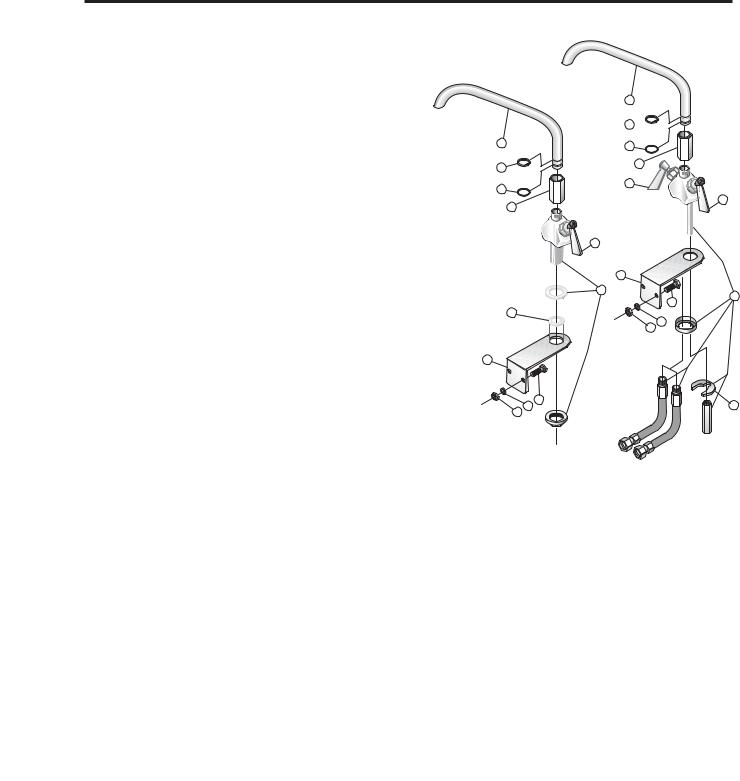
SERVICE PARTS
WARRANTY
Our Company supports a worldwide network of Maintenance and Repair Centers. Contact your nearest Maintenance and Repair Centre for replacement parts, service, or information regarding the proper maintenance and repair of your cooking equipment
In order to preserve the various agency safety certification (UL, NSF, ASME/Ntl. Bd., etc.), only factorysupplied replacement parts should be used. The use of other than factory supplied replacement parts will void warranty.
FAUCET ASSEMBLY
ITEM |
PART |
DESCRIPTION |
QTY. |
NO. |
NO. |
|
|
1. |
KE50825-7 |
3/4" SPOUT . . . . . . . . . . . . . . . . . . . |
. . . . .1 |
2. |
FA95022 |
RETAINING RING . . . . . . . . . . . . . . . . |
. . . .1 |
3. |
FA05002-19 |
"O" RING . . . . . . . . . . . . . . . . . . . . . . . |
. . . .1 |
4. |
KE51736 |
LONG FAUCET NUT . . . . . . . . . . . . . |
. . . .1 |
5. |
SE50020 |
HOT WATER STEM ASSEMBLY . . . . . |
. . . .1 |
|
|
(DOUBLE PANTRY ONLY) |
|
6. |
SE50021 |
COLD WATER STEM ASSEMBLY . . . . |
. . . .1 |
7. |
KE51401 |
SINGLE PANTRY BODY . . . . . . . . . . . |
. . . .1 |
|
|
(C/W ITEM NO. 6) |
|
8. |
KE50335 |
ADAPTER WASHER . . . . . . . . . . . . . . |
. . . .1 |
|
|
(SINGLE PANTRY ONLY) |
|
9. |
KE51403 |
DOUBLE PANTRY BODY . . . . . . . . . . |
. . . .1 |
|
|
(C/W ITEM NO. 5&6) |
|
10. |
SK00395-1 |
FAUCET MOUNTING BRACKET . . . . |
. . . .1 |
11. |
FA11258 |
HEX CAP SCREW . . . . . . . . . . . . . . . |
. . . .2 |
12. |
FA30505-1 |
WASHER . . . . . . . . . . . . . . . . . . . . . . |
. . . .2 |
13. |
FA21008 |
HEX NUT . . . . . . . . . . . . . . . . . . . . . . |
. . . .2 |
14. |
SE50447 |
WASHER HORSESHOE . . . . . . . . . . . |
. . . .1 |
1
2 
1 |
3 |
2 |
4 |
|
|
3 |
5 |
|
|
4 |
6 |
|
|
|
6 |
|
10 |
|
7 |
|
9 |
|
11 |
8 |
|
|
12 |
|
13 |
10 |
|
|
11 |
12 |
14 |
13 |
|
